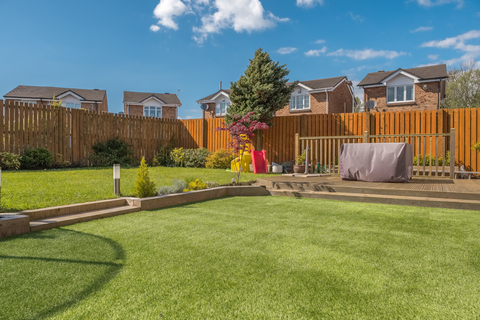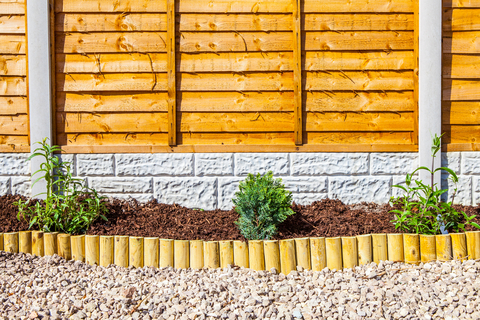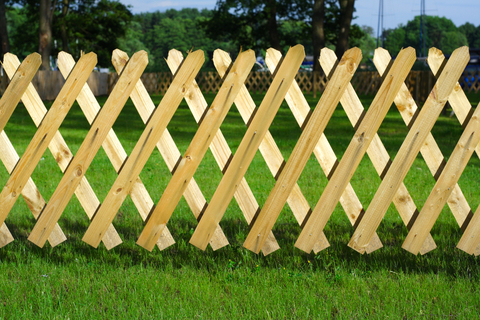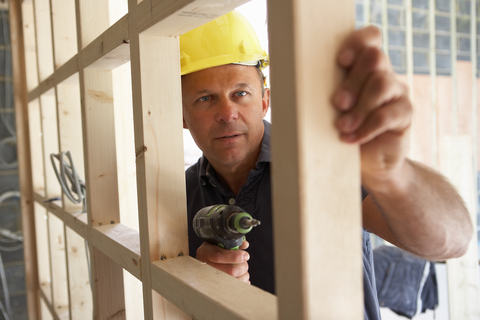Creative Uses of Wooden Sleepers in Landscape Design
Published on 9 July 2025

Once the sturdy workhorses of the railway, wooden sleepers have confidently chugged their way into our gardens, becoming a firm favourite for landscape designers and DIY enthusiasts across the UK. At Linnell Brothers, with over 145 years of heritage supplying quality timber, we’ve seen first-hand the incredible transformations these versatile pieces can bring to any outdoor space. If you’re looking for creative sleeper ideas to elevate your garden, you’ve come to the right place.
Why Choose Timber Sleepers for Your Garden?
Timber sleepers in landscape design offer a winning combination of practicality and aesthetic appeal, making them a superb choice for a multitude of garden projects.
- Durability: Depending on the timber type and treatment, sleepers can last for decades, providing a long-term solution for your landscape design. Treated softwood can last up to 30 years, while hardwood can last 100 years or more.
- Affordability: Compared to traditional masonry, timber garden sleepers UK often present a more cost-effective option for many garden structures.
- Quick Installation: Their uniform size and robust nature make them relatively straightforward to work with, speeding up your project completion.
- Eco Credentials: Opting for sustainably sourced or reclaimed railway sleepers contributes to an environmentally conscious garden.
Raised Sleeper Beds: Elevate Your Gardening Game
Raised sleeper beds are one of the most popular and beneficial uses of timber sleepers. They offer numerous advantages for gardeners of all levels, improving drainage and soil control, which can significantly boost yields.
- Ergonomic Height: No more back-breaking bending! Raised beds bring your plants to a comfortable working height, making planting, weeding, and harvesting a joy.
- Improved Drainage: The raised structure naturally enhances drainage, preventing waterlogging and promoting healthier root development.
- Soil Customisation: You have complete control over the soil mix, allowing you to create the perfect growing environment for specific plants, boosting yields and plant vigour.
For a standard 1.2m x 2.4m raised bed, you’ll typically need:
- Four 2.4 m softwood or hardwood sleepers for the long sides.
- Four 1.2 m softwood or hardwood sleepers for the short ends (cut from 2.4 m sleepers).
- Heavy-duty, weather-resistant timber screws.
- A drill, a spirit level, and a saw.
Quick Step-by-Step for a Basic Raised Bed:
- Prepare your site: Ensure the ground is level and clear.
- Lay the first course: Form a rectangle with two 2.4 m sleepers and two 1.2 m sleepers.
- Secure corners: Drill pilot holes and screw the sleepers together.
- Add layers: stack additional layers, staggering joints for stability, and screw each layer to the one below.
- Lining (optional): For added longevity, line the inside with a permeable membrane before adding soil.
Remember to consider the treatment of your wooden sleepers, especially for edible crops. We offer comprehensive advice on timber treatment to ensure your raised beds are both beautiful and safe.

Statement Sleeper Planters & Vertical Accents
Beyond simple raised beds, wooden sleepers can be transformed into striking features, showcasing true creative sleeper ideas.
- Tiered Modules: Create multi-level planters, perfect for showcasing a variety of plants or herbs, adding architectural interest to your patio or garden.
- Painted Finishes: Don’t be afraid to experiment with colour! Painting your sleepers can create a modern, vibrant look or a subtle, harmonious blend with your existing garden scheme.
- Pollinator Pockets: Design small, intricate planter boxes to attract bees and butterflies, contributing to local biodiversity.
Steps & Pathways: Guiding Your Garden Journey
Wooden sleepers are ideal for crafting natural-looking steps and pathways that blend seamlessly into your garden.
- Grip Tips: For steps, consider incorporating anti-slip strips or using sleepers with a naturally rougher surface to ensure safety, especially in wet conditions.
- Spacing Rules: When laying pathways, consistent spacing between sleepers is crucial for a smooth and comfortable walk.
- Gravel Infill: Filling the gaps between sleepers with gravel not only aids drainage but also helps to suppress weeds, keeping your pathway looking tidy.
Border Edging & Retaining Walls: Defining Your Space
Wooden sleepers in landscape design excel at creating strong, defined borders and practical retaining walls.
- Stability Basics: For simple border edging, sleepers can be laid directly on the ground and secured with stakes.
- When to Add Rebar/Deadmen: For taller structures, a sleeper retaining wall over two courses high will require incorporating rebar vertically and/or ‘deadmen’ (short sleeper lengths buried perpendicularly) for enhanced stability.
- UK Planning Rules: Be aware that in the UK, retaining walls over 1 metre in height may require planning permission. Always check with your local council before commencing significant projects.
Garden Furniture & Features: Relax and Entertain
Extend your living space outdoors with bespoke garden furniture and features crafted from wooden sleepers.
- Benches: Create robust and attractive seating areas, perfect for enjoying your garden.
- Fire-pit Surrounds: Build a rustic and safe surround for your outdoor fire pit, ideal for cosy evenings.
- Outdoor Tables: Design unique and durable outdoor tables that complement your garden’s aesthetic.
- Longevity Tip: To prolong the life and enhance the natural beauty of your sleeper furniture, consider applying a good-quality linseed oil finish annually.
Water Features: A Soothing Oasis
Introduce the calming sound of water with sleeper-framed ponds or elegant rills, another fantastic example of creative sleeper ideas.
- Sleeper-Framed Ponds: Construct a sturdy and visually appealing border for your pond using stacked garden sleepers UK.
- Waterproof Lining Essentials: Remember that a high-quality, durable pond liner is essential to prevent leaks and ensure the longevity of your water feature.
Hardwood vs. Softwood Sleepers: Making the Right Choice
The choice between hardwood vs softwood sleepers depends on your project’s demands and budget.
- Lifespan Comparison: Treated softwood sleepers can last up to 30 years, offering excellent value. Hardwood sleepers, however, boast exceptional durability, with some varieties potentially lasting 100 years or more.
- Cost: Softwood sleepers are generally more affordable upfront. Hardwood sleepers represent a greater initial investment but offer superior longevity.
- Weight: Hardwood sleepers are considerably heavier than softwood, which can be a factor in handling and installation. Consider this when planning your wooden sleepers in a landscape design project.
Maintenance & Safety Checklist: Protecting Your Investment
To ensure your wooden sleepers remain a beautiful and safe part of your landscape for years to come, follow these essential guidelines:
- Gloves and Mask: Always wear gloves and a dust mask when cutting or handling treated timber to protect yourself from splinters and airborne particles.
- End-Grain Sealing: When cutting treated sleepers, always seal the exposed end grain with a suitable timber treatment to prevent moisture ingress and maintain the integrity of the timber.
- Annual Inspection: Regularly inspect your sleeper structures for any signs of wear, rot, or movement, addressing any issues promptly to prevent further damage. This is especially important for reclaimed railway sleepers, as their past life might mean varied conditions.
Why Source Sleepers from Linnell Brothers?
When it comes to timber sleepers in landscape design, Linnell Brothers stands apart. We’re not just suppliers; we’re specialists with a deep-rooted understanding of timber and its applications.
Vast Stock: With over 17,000 m³ of timber on site, we boast an unparalleled selection of wooden sleepers, ensuring you’ll find exactly what you need for your project.
On-Site Treatment Plant: Our dedicated on-site treatment plant guarantees that our treated garden sleepers UK meet the highest standards of durability and longevity.
Fast Three-Day Delivery: We understand the urgency of your projects, which is why we offer fast and reliable three-day delivery across the UK.
Expert Advice: Our 145+ years of heritage mean you benefit from our extensive knowledge and experience. We’re always here to offer expert advice and guidance for your specific requirements for wooden sleepers in landscape design.

Unleash Your Creativity with Linnell Brothers
Ready to transform your garden with the timeless appeal and versatility of wooden sleepers in landscape design? We invite you to explore the vast possibilities and discover the perfect timber for your next landscaping masterpiece.
Call us today on 01327 354422 to discuss your project, or use our quick-quote form on our website for a fast and efficient estimate.
Still confused on the design and measurements of your sleepers? Use our calculators to get an estimate of the perfect size suitable for you everytime.
Alternatively, why not visit our showroom and see our impressive stock for yourself? Visit us at: Silverstone Fields Farm, Silverstone, Northants, NN12 8FS
Frequently Asked Questions (FAQ)
- Do I need planning permission for a sleeper retaining wall?
In the UK, a sleeper retaining wall over 1 metre in height often requires planning permission. It’s always best to check with your local planning authority before starting construction.
- How do I stop sleepers from rotting in soil?
Using treated wooden sleepers is crucial. Additionally, ensuring good drainage around the sleepers and sealing any cut ends will significantly extend their lifespan in contact with soil. You can also consider using a damp-proof course or membrane between the sleeper and the soil for added protection.
- What’s the best way to cut wooden sleepers?
For precision and safety, we recommend using a good-quality circular saw with a sharp, appropriate blade for timber. Always ensure the sleeper is securely supported before cutting. For very thick or dense hardwood sleepers, a chainsaw might be necessary, but always exercise extreme caution and wear full PPE. Remember to seal any newly cut ends with a suitable timber preservative.
- Can I use reclaimed railway sleepers for any garden project?
Reclaimed railway sleepers offer unique character and an eco-friendly option. However, it’s important to be aware that historically, some were treated with creosote, which is now restricted for certain domestic uses in the UK due to health and safety concerns. We advise checking the specific treatment history of any reclaimed sleepers, especially if they will be in contact with skin or used for raised beds where food crops will be grown. For peace of mind and guaranteed treatment standards, our new treated wooden sleepers are an excellent alternative.
- How do I secure stacked wooden sleepers for structures like raised beds or walls?
For securing stacked wooden sleepers, we recommend using heavy-duty, weather-resistant timber screws or specialist timber fixing brackets. For taller structures, or a sleeper retaining wall, the use of internal steel rebar (driven vertically through pre-drilled holes in the sleepers) or ‘deadmen’ (short lengths of sleeper buried perpendicularly into the bank behind the wall) provides essential additional stability and strength. Always ensure fixings are long enough to penetrate at least two layers of sleepers securely.





